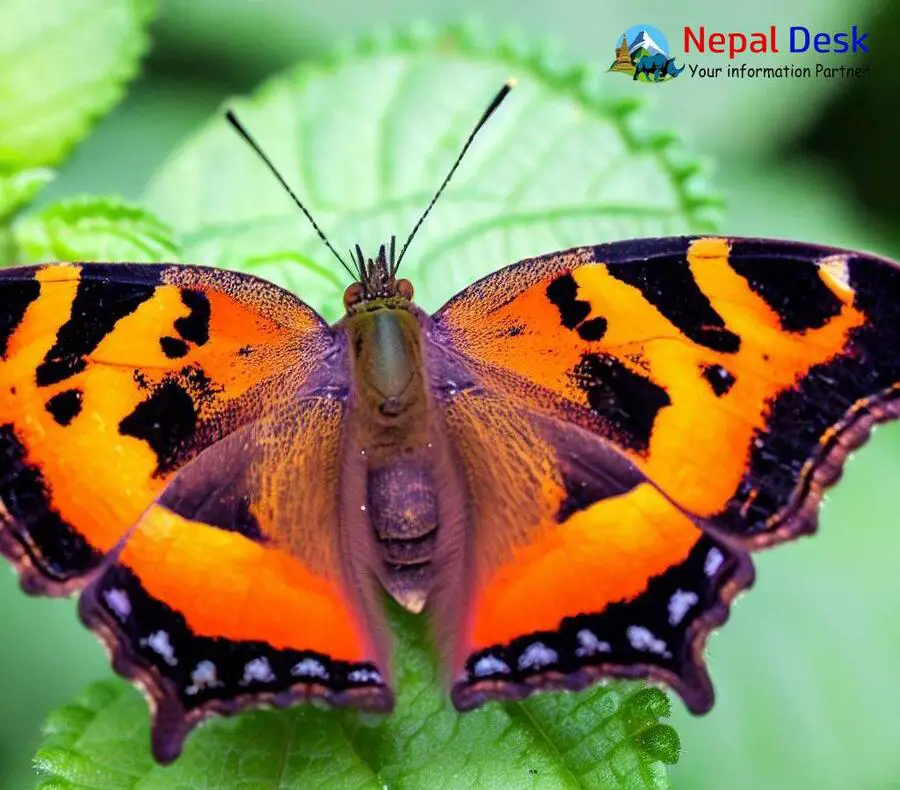
The Indian Tortoiseshell, scientifically known as Aglais cashmirensis, is a specific variety of nymphalid butterfly that dwells in the Himalayas at elevations higher than 2,000 meters. These butterflies are quite common and can be spotted in open spaces Interestingly, they can still be commonly sighted even in November when temperatures drop significantly during nighttime.
Habitat of The Indian Tortoiseshell Butterfly
The Indian Tortoiseshell finds its home in the lofty elevations of the Himalayan mountains. Typically inhabiting altitudes ranging from 2,000 to 4,000 meters above sea level, these butterflies thrive in pristine alpine meadows and along temperate forest edges. The region's diverse vegetation provides ample nourishment for both caterpillars and adult butterflies.
Flight Behavior & Pattern of The Indian Tortoiseshell Butterfly
Witnessing an Indian Tortoiseshell in flight is truly a sight to behold. Their delicate wings showcase an intricate blend of black outlines upon a rich brown base adorned with vibrant orange patches. Their flight pattern is characterized by smooth glides interspersed with flutters. These agile fliers also display impressive evasive maneuvers to avoid predators.
Life Cycle of The Indian Tortoiseshell Butterfly
The life cycle of an Indian Tortoiseshell consists of four main stages: egg, larval (caterpillar), pupal (chrysalis), and adult. Female butterflies lay their eggs on host plants such as thistles or nettles where the caterpillars will later feed. Once hatched, the caterpillars transform into pupae within a spun silky cocoon. Finally, the remarkable metamorphosis unfolds, and an adult butterfly emerges, ready to take flight and leave behind its temporary chrysalis home.
Features & Behavior: Male and Female Indian Tortoiseshell Butterfly
Males of this species are easily distinguishable from females due to their more vibrant colors and larger size. Male Indian Tortoiseshells also exhibit territorial behavior, often guarding a specific area from other males. When competing for females, these butterflies indulge in captivating aerial displays that both enthrall and intimidate their rivals.
Female Indian Tortoiseshells exhibit a more muted coloration but are still undeniably enchanting. As they journey through their habitat searching for suitable host plants for their eggs, they exhibit a delicate grace befitting their ethereal beauty. Female butterflies tend to favor well-camouflaged locations for laying eggs, ensuring the next generation's safety and survival.
Distribution & Spotting of The Indian Tortoiseshell Butterfly in Nepal
For butterfly enthusiasts eager to spot the Indian Tortoiseshell in Nepal, the country's diverse national parks are excellent destinations. Shivapuri Nagarjun and Langtang National Parks both offer prime opportunities to observe these mesmerizing insects amidst breathtaking landscapes. The best time to visit these areas is during the warmer months when the butterflies are most active.
In conclusion, the Indian Tortoiseshell Butterfly's stunning presence within the Himalayan regions serves as a living testament to nature’s boundless beauty and adaptability. By understanding and appreciating these extraordinary creatures, we can all contribute to preserving their fragile habitats for future generations of nature lovers to enjoy.
